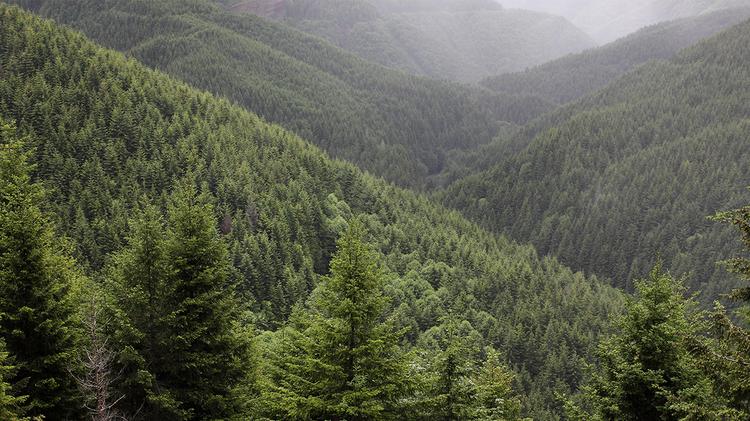Source >>>

By Karl Wirsing – WeyerhaeuserApr 16, 2021
For thousands of years, forests have held a powerful, almost mystical, place in the human imagination. Their dense canopies and thriving ecosystems embody ideals of wilderness and the outdoors. They offer myriad opportunities for recreational and spiritual health. And they’re among the most resilient and renewable resources on the planet, providing so many different useful, everyday products to people and communities around the world.
Now forests have an even more urgent role to play as the world confronts current and potential future disruptions from climate change.
The concentration of CO2 in the atmosphere remains at record levels, and 2020 was the second-hottest year on record for the planet. Limiting further warming and avoiding the worst projected impacts of climate change will require removing CO2 from the atmosphere.
Fortunately, one of the largest and most economical opportunities to remove CO2 from the atmosphere already exists: forests.
“As trees grow, they naturally sequester CO2 and store it as solid carbon in the tissues of their trunks and branches,” says Ara Erickson, director of corporate sustainability at Weyerhaeuser and a forestry and natural resource expert. “All forests provide this natural carbon sink at different scales, from the equatorial jungles of Borneo to the boreal forests near the Arctic — and from state and federal forests down to local community parks.”
Forests that are primarily managed for timber production also have a crucial role to play in limiting the concentration of CO2 in the atmosphere. In addition to the CO2-removal powers of growing trees, the wood products manufactured from timber continue to bank carbon for decades.
“We know it sounds counterintuitive to view harvesting and manufacturing as part of a climate solution,” Erickson says. “But it’s often overlooked that the trees we harvest for wood products continue storing carbon for a very long time. And since we quickly plant new trees to take their place — about 140 to 150 million seedlings every year — our young forests immediately begin absorbing more CO2 from the atmosphere until they reach the age when they’re ready for harvest again. It’s an amazing sustainable cycle that constantly pulls more and more CO2 out of the atmosphere over time — far more than we ever emit during the harvesting and manufacturing process.”
RECOMMENDED
MANUFACTURING Boeing CEO: China will ‘most likely’ allow 737 Max jets to fly in 2021
EDUCATION Opinion: K-12 schools are not preparing students for the workforce
TECHNOLOGY Tech roundup: Logixboard, FlavorCloud land Series A funding
Leveraging the full power of this continuous cycle is a key part of Weyerhaeuser’s new sustainability strategy. Launched in July 2020, this strategy maps out the company’s commitments and goals for the next decade, and among other components it includes an intensified focus on contributing to climate change solutions, helping provide sustainable homes for everyone, and helping rural communities remain thriving places to work and live.
Weyerhaeuser owns or manages 11 million acres of timberlands in the United States, along with 14 million acres in Canada under long-term licenses. On a broad scale, these timberlands — along with millions of acres of other sustainably managed forests — provide a far-reaching, cost-effective and natural climate solution. In fact, forests and forest products absorb or store about 10 to 20 percent of annual CO2 emissions in the U.S. And in Washington, the second-largest softwood lumber producer in the nation, that number is as high as 35 percent.
Similarly, there’s an increasing focus on the value of working forests in providing a renewable and climate-smart alternative for construction. A 2019 study by MIT scientists found that using wood products instead of cement, iron and steel could significantly cut construction emissions and costs, and one of the most important innovations to capitalize on these advantages involves mass timber — a group of engineered wood building materials that are as strong as steel, lighter than concrete, fire resistant and store significant amounts of carbon.
“Wood is the ultimate green building material,” Erickson says, “and we have a tremendous opportunity to help promote innovative, affordable and fully sustainable building solutions that support everything from residential housing to commercial construction. And we know we can do this while improving the overall health and resilience of our working forests in the face of a changing climate, while also maintaining the many co-benefits they provide — from clean air and water to habitat for biodiversity, recreation and so much more.”
Encouraging the use of sustainably grown and harvested wood has another positive effect: Providing a significant incentive for forest owners to keep their land as forests.
“Deforestation is a major threat in many places around the world, but total forest area in the United States has actually increased over the past 50 years,” Erickson says. “So, when we talk about managed forests, we’re not talking about the permanent removal of any trees or protected forested land. Harvesting for us is one step in a continuous cycle of growth and renewal. And though working forests aren’t the only solution to mitigating climate change, we believe they can — and should — be leveraged to deliver powerful climate solutions that benefit everyone.”
Weyerhaeuser was founded in 1900 and is one of the largest private owners of timberlands in the world, and also one of the largest manufacturers of wood products in North America.

